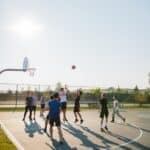
The Effects of Sedentary Behaviour on Patients with Peripheral Arterial Disease: A systematic review
September 25, 2023
Are more physical education classes related to less time in leisure-time sedentary behavior? An analysis including adolescents from 73 countries
October 11, 2023A paper titled “Sedentary Behavior and Physical Frailty Among Rural Older Adults in China: The Moderating Effect of Social Isolation” was recently published in the Journal of the American Medical Directors Association. A summary of the article and citation details are re-posted below. The full article can be found here.
ABSTRACT
Objectives
Few studies have explored the mechanisms underlying the relationship between sedentary behavior and physical frailty. The aim of this study was to investigate the moderating effect of social isolation on the association between sedentary behavior and physical frailty among older adults in rural China.
Design
Cross-sectional study.
Setting and Participants
Data were from 3238 individuals aged ≥60 years from rural areas in China.
Methods
Binary logistic regression was used to explore the association between sedentary behavior and physical frailty and the moderating effect of social isolation.
Results
The prevalence of physical frailty was 18.7% among the older adults, and 17.0% of them were sedentary for ≥8 h/d. Compared with older adults with sedentary behavior for <4 h/d, participants with sedentary behavior for ≥8 h/d were more likely to suffer from physical frailty (odds ratio [OR], 2.26; 95% CI, 1.57–3.27). We found that social isolation may aggravate this relationship (OR, 3.31; 95% CI, 2.06–5.32), especially for rural older adults who were sedentary for ≥8 h/day.
Conclusion and Implications
More sedentary behavior was associated with higher risk of physical frailty, which was especially apparent among older adults with social isolation, suggesting that sedentary older people who experienced social isolation were more vulnerable to physical frailty. Decreasing sedentary behavior in older adults and encouraging them to participate in interactive social activities could help prevent physical frailty.
CITATION
Zhou, Y., Yuan, Y., Wang, X., Qi, K., Zhang, S., Zhang, Y., Li, J., Zhou, C. (2023). Sedentary Behavior and Physical Frailty Among Rural Older Adults in China: The Moderating Effect of Social Isolation. Journal of the American Medical Directors Association, https://doi.org/10.1016/j.jamda.2023.08.020
Photo by Eepeng Cheong on Unsplash




